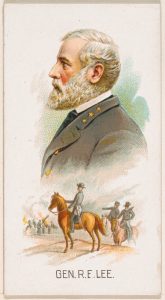It was the night of June 28, 1984. Jennie Vincow, a 79-year-old mother, had seen her son the day before and was getting ready to go to bed as she did each night. However, little did she know, she would not be waking up the next morning. That was the very night Richard Ramirez would begin his horrendous killing spree as “the Night Stalker” in the Los Angeles area. Richard, in a cocaine-driven state, entered and attempted to burglarize the home of Vincow, but when he was unable to find any valuables worth stealing, he brutally slashed her throat, nearly decapitating her. He then raped Vincow’s dead body before escaping into the night unnoticed.1 A murder as brutal as this one was only the beginning of Richard’s plunge into a vile cycle filled with murder, rape, and terror, including the murdering of thirteen people and sexually assaulting eleven women.2 However, what could possibly have caused Richard Ramirez to turn into such a monster?

Richie, as his family called him, was born in the sun city El Paso, Texas to two immigrant Mexican parents, Julian and Mercedes Ramirez.3 During Mercedes Ramirez’ pregnancy, she worked at a boot factory where she would often have to work and breathe in dangerous chemicals all day long. This caused her to have many difficulties while she was pregnant with him; she frequently had to get hormone injections because her body was rejecting the child. Nevertheless, Mercedes was able to give birth to a healthy baby boy. Born the youngest of five siblings, Richard often looked up to his older three brothers and formed a tight connection with his sister at a young age. As a baby, Richard “was a good baby, [he] didn’t cry much, [and he] ate & slept well.” Ruth, his older sister, was particularly fond of her younger brother and would often dress him up and play with him. She considered him her “little doll” that “would be different than her older brothers” who teased and roughhoused with her; her brothers were known to be aggressive and had short tempers like their father.4
Tragedy struck the Ramirez household when two-year-old Richard was nearly killed by a dresser falling on his head. Young Richard was always fond of music and listening to the radio, so one afternoon while being watched by his babysitter, he begged her to turn on the radio for him. After she continually refused to do this for him, Richard thought he would do the job himself. The small two-year-old waddled into his parent’s bedroom to reach the small radio on top of their long wooden dresser. However, Richard was much too small to reach the radio sitting on top; instead, he opted to climb the dress through the open drawers to reach his goal. As his small hands and feet climbed the tall dresser, closer and closer to the radio, the dresser decided it could not hold the weight of the boy. Richard came tumbling down with the dresser over him, bashing his forehead open and knocking him unconscious for fifteen minutes, all the while bleeding profusely. Quickly, his babysitter dialed his parents and transported him to the nearest hospital where he received 30 stitches and was diagnosed with a concussion. However, this would not be the last major head injury Richard was to suffer.5

When Richard was five years old, he went to the local park with his older sister, Ruth, and his older brother, Robert. Excited to see his sister who was already swinging, Richard ran to Ruth. Unable to stop herself in time from swinging, she “slammed into his head with terrific force, knocking him out and giving him a deep gash.”6 Richard was once again knocked unconscious and taken to the hospital. A year later, now age six, Richard began to have epileptic seizures and was diagnosed with “Temporal Lobe Epilepsy,” and he would continue to have seizures until his early teens. People diagnosed with temporal lobe epilepsy often showcase “altered sexuality, hyper-religious feelings, are hypergraphic, and are excessively aggressive.”7
The most notable influence over Richard in his developing years was his older cousin Miguel, a former Green Beret who served in Vietnam. At age twelve Richard began to spend time with him when he returned home from his service. To Richard, Miguel was a real-life hero who fought in the name of freedom and returned with several medals pinned to his chest. Miguel would often show Richard the polaroids he took in Vietnam of Vietnamese women forced into performing fellatio at gunpoint on Miguel. He would then show Richard a photo of him holding those same women’s decapitated heads.8 Richard later recounted that he was oddly sexually aroused by these images, even though he knew they were wrong. Richard quickly came under Miguel’s wing. On afternoons, Miguel would train Ramirez in military tactics he learned while in Vietnam; how to be stealthy and how to kill another human being effectively were all lessons Miguel taught Richard.9

May 4, 1973 was a night Richard would never forget. It started as every other evening did, with Richard over at Miguel’s house smoking pot and playing miniature pool, when he reached into the fridge for a cold drink. While grabbing the drink Richard noticed a .38 caliber inside the fridge. Stunned by his discovery, Richard asked Miguel what the gun was doing inside of the fridge; Miguel quickly dismissed him and told him he might be using it. Later that night, Miguel’s wife came home after grocery shopping, complaining that Miguel didn’t have a job; this was a fight they often had. Calmly, Miguel walked over to the fridge, pulled out the gun and shot his wife at point blank range. Richard stood stunned before Miguel ordered him to leave the scene and not tell anyone what he had witnessed. Richard walked back to his own home, saying nothing to any of his family members or law enforcement. Miguel was captured for the crime but not charged because he pled insanity, citing that he had not gotten proper psychological treatment after the Vietnam War. But that was the first time Richard came into contact with death personally, specifically the death of someone he knew well. Richard years later recounted that “it was the strangest thing… I knew her… she was dead, murdered, gone.”10
When studying Richard’s childhood years, it is clear he had all the ingredients to become a serial killer. From the devastating head injuries that left him mentally impaired to the overwhelming negative influence of his cousin Miguel, one can clearly see that Richard’s childhood greatly affected the way he grew up, later to become the horrendous Night Stalker. From Richard Ramirez case, one can learn what it takes to create a murderer and how an adolescence’s development can influence the human mind.
- Philip Carlo, The Night Stalker: The Life and Crimes of Richard Ramirez (New York: Kensington, 2016), 6. ↵
- “Satanic Serial Killer and Rapist Richard Ramirez ‘Turned Green’ before Death,” International Business Times (website), June 9, 2013. Accessed April 1, 2019. https://www.ibtimes.co.uk/satanist-serial-killer-richard-ramirez-turned-green-476465. ↵
- Encyclopedia of Occultism and Parapsychology, 2001, s.v. “Ramirez, Richard (1960-),” by J. Gordon Melton. ↵
- Philip Carlo, The Night Stalker: The Life and Crimes of Richard Ramirez (New York: Kensington, 2016), 139-141. ↵
- Philip Carlo, The Night Stalker: The Life and Crimes of Richard Ramirez (New York: Kensington, 2016), 142-143. ↵
- Philip Carlo, The Night Stalker: The Life and Crimes of Richard Ramirez (New York: Kensington, 2016), 146. ↵
- Philip Carlo, The Night Stalker: The Life and Crimes of Richard Ramirez (New York: Kensington, 2016), 146-147. ↵
- Encyclopedia of Occultism and Parapsychology, 2001, s.v. “Ramirez, Richard (1960-),” by J. Gordon Melton. ↵
- Philip Carlo, The Night Stalker: The Life and Crimes of Richard Ramirez (New York: Kensington, 2016), 152-153. ↵
- Encyclopedia of Occultism and Parapsychology, 2001, s.v. “Ramirez, Richard (1960-),” by J. Gordon Melton. ↵



62 comments
Alin Bocardo Felix
The article is a quick overview of Richard Ramirez’s life, but at times it seems to hold back. The first and second paragraph immerse the reader into the life of Richard and the curiosity as to how he ended such a gruesome manner, but the third paragraph slowed the story down a bit. The important point of the paragraph was to inform the reader of the first head injury of Richard, which would then be a reason for epilepsy and psychological issues, but turned down a tight path that loses the reader’s focus for a bit. Overall, it is informative, well written and for the most part, highlights what the reader needs to know about the serial killer and that lifestyle.
Mark Dominguez
An interesting article that gives insight to how childhood experiences can shape a person’s emotional development and what compels someone to perform such horrific acts of violence. Very thought provoking, in the sense that had events gone differently, such as the head injuries he suffered as a child or the negative influence from his cousin, would his life had a different ending?
Rahni Hingoranee
The article helps to understand the ingredients that turned Ramirez into psychopath. Multiple severe head injuries and a subsequent diagnosis with epilepsy has bound to be a reason that Ramirez became the way he was; this is not to justify, but rather to scientifically, better comprehend the cause of his psychotic episodes. The influence of a family member who also has mental health issues is another important factor we can consider when studying him. Overall, the article is very insightful into how Ramirez became a serial killer/rapist/necrophiliac after just being a ‘normal’ kid for the most part.
Kelsey Sanchez
This article is shocking for the most part because of how Richard Ramirez was a good boy when he was little and now became the serial killer nobody expected. However, this article displays psychology by how Richard adapted the qualities of becoming that person. The way he started to adopt the qualities was when he started to have those head injuries, which could have affected his mind in a negative way. However, being present in a situation where he was a witness of his cousin, Miguel, leading to killing his wife this could have affected him as well because as he was exposed to the killing, he did not do anything and was being influenced. As his cousin Miguel killed his wife, this left Richard’s mindset in a different perspective. All the upbringing events throughout his childhood left an outcome that made him the person he was.
Mauro Bustamante
This article was well written and gave much information that the actions that some take isn’t always just point blank, their may or may not be a story behind someone horrific actions but in this case it is obviously explained that Richard Ramirez didn’t have a typical childhood that many children had. Not only was he diagnosed with “Temporal Lobe Epilepsy,” he was taken under the wing of veteran that was trained to kill. Richard was influenced and gave the information of killing, and that can cause instability in someone mental health and greatly influences ones future.
Samantha Bonillas
Well written article. I think that it’s so crazy that one moment in someone’s life can impact the rest of their life. Richard lived a normal life growing up and when he met Miguel and was introduced to what he found out to be his arousal, that changed the route of life he was taking. He became a killer because of one moment that impacted his life and in this case, for the worst. How I was raised, having a faith or believing in someone of a higher power can help steer away from negative thoughts and negative actions. I enjoyed this article and the detailed research.
Vania Gonzalez
Richard Ramirez grew up in an environment where he saw that killing was basically okay. Although, his parents did not know what he was being taught while they left him in the hands of his uncle someone they trusted to raise their son in a good way not show him to become a cold blooded killer. This is one of those cases where you can see that someone’s childhood plays an important role in their sanity.
Cristianna Tovar
In the first paragraph, the description of Richard Ramirez’s act of cold-blooded, horrific murder makes readers feel disgusted and angry towards him. However, in the rest of the article, readers develop a sense of sympathy towards him as they read about all the hardships he had to endure, even from inside of the womb. With his mother working in a boot factory and being exposed to harsh chemicals while she was pregnant with him, it was apparent from the start that something could be wrong. With this information in mind, as well as Richard suffering major head injuries and being exposed to death by a close relative, readers can understand that it was Richard’s upbringing that caused him to become a serial killer. This article did a great job of highlighting that a person’s past greatly influences their future.